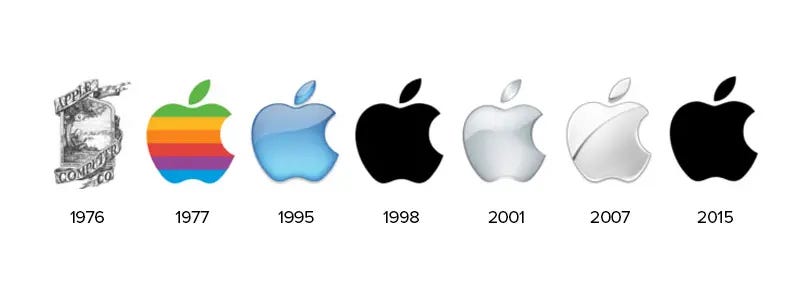Design Thinking and Innovation at Apple
Design Thinking + Strategy and Execution + CEO as a chief innovator + Bold Business Experiments = APPLE
Apple became the most valuable public rated company in history with a $600 share price of 620 billion dollar market capital and 100 billion dollar annual sales. Apple success was not just the result of strategic moves or an innate sense of market timing, it is a surprising consistency in the way the company worked. Simply put, “the Apple Way”
1. Design Thinking
“Those of us on the original Macintosh team were really excited about what we were doing. The result was that people saw a Mac and fell in love with him. There was an emotional connection that came from the heart and soul of the design team.”
~ Bill Atkinson, member of the Apple Macintosh development team.
In the mid-1970s computers were typically housed in discrete locations and only used by specialists. The notion of the computer as a tool for individual work was unimaginable in the 1970s. To help people love their equipment and the experience of using it the level of complexity needed to be reduced dramatically. Apple's product starts with design from people's need and want. The design of the product is not limited by technology, the engineers are pushed to use the same kind of creativity and innovation to make it happen. Design is very well thought through, it is beyond fashion, the capacity and technology to build it are not commoditized and no compromise for the functionalities. This is Design Thinking, a combination of user desirability, technology possibility and market viability.
The smallest of details are scrutinized not just the appearance of the product but also its functions, features and packaging. The design team kept on going deep until they found the key underlying principle of a problem, then built.
“Design is not just what it looks like and feels like design is how it works. That simplicity is the ultimate sophistication.”
2. Strategy and Execution
“You can see a lot just by observing”
~ Yogi Berra, major league baseball player and manager
Apple history began in 1976, it launched the first personal computer Apple 2 in 1978, in 1981 IBM entered the market with its PC that can be cloned, since 1985 Apple's market share kept declining, the board of Apple axed Steve Jobs. In the following eleven years, products and projects at Apple proliferated and consequence of various strategies and many of them failed. The technology department process became more traditional and resembled approaches found at other companies.
“Process makes you more efficient but innovation comes from people calling each other at 10:30 at night with a new idea, it comes from saying no to a thousand things to make sure we don't get on the wrong track or try to do too much”
~ Steve Jobs.
Everything changed after Steve Jobs returned to Apple in 1997 decisions were made to achieve excellence in execution. Stopped licensing program, eliminated 70% of new projects, the product line was reduced from 15 to only 3, the website was launched for direct sales, sophisticated marketing, kept product development complete secret, shutdown facilities & move them abroad and inventory was reduced from months to a few days.
Apple also adopted the platform strategy for its products. They designed the initial product as a platform with an architecture that accommodated the development and production of the derivative products. Customer's experience was integrated into Apple's product design and development. A lot of it empirically drives by iterative customer involvement, Apple worked intimately with manufacturers and assured that their products be completely attuned to customers. Apple's product always evolves the importance of design and is a motivation to continued innovation rather than a static approach that assumes a single conclusion.
3. CEO as a chief innovator
“The really great person will keep on going and find the key underlying principle of the problem and come up with a beautiful and elegant solution that works.”
~Steve Levy, author of the perfect thing
Company founders essentially imprint their organizations with their own personality characteristics and Apple-Jobs is no exception. Steve Jobs and Apple seem interchangeable terms, Steve Jobs drive for perfection was apples drive for beautiful elegant products and its superior operations. Steve Jobs vision held that Apple's products were to be personal tools for individuals instead of an enterprise solution, Steve Jobs also had total hands-on involvement and decision making from strategy to product and service design to packaging.
4. Bold Business Experimentation
“The greatest artists like Dylan Picasso and Newton risks failure and if we want to be great we've got to risk it too.”
~ Steve Jobs
When everyone was moving online, Apple decided to move into retail and created every Apple store with the same painstaking focus on details against the conventional wisdom of open platform, collaboration, community design, transparency. Apple insisted to develop and integrate its own hardware-software and keep product launches secret. Apple is also constantly learning adapting and evolving from the design of an array of colours to black and white colour theme, from the closed developer community to the open developer platform, from no compatibility for other OS to Windows-compatible, in summary, the root of Apple's success was a set of principles with a deep commitment to great products and services at its core.
Design thinking, clear development strategy and execution, its CEO as a chief innovator and the rational courage to conduct bold business experiments. This is how Apple became Apple.
Thank you for reading.
Shivani from DesignPlayStore.



